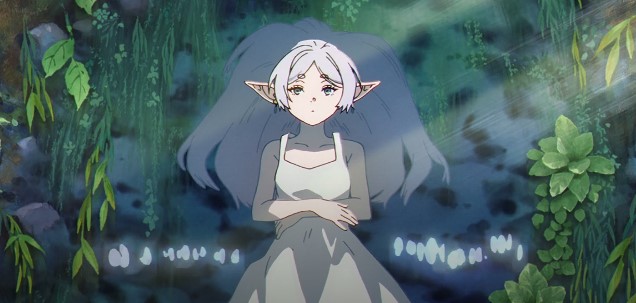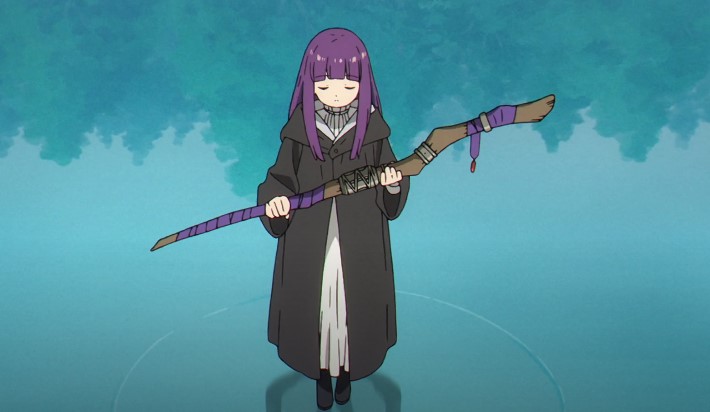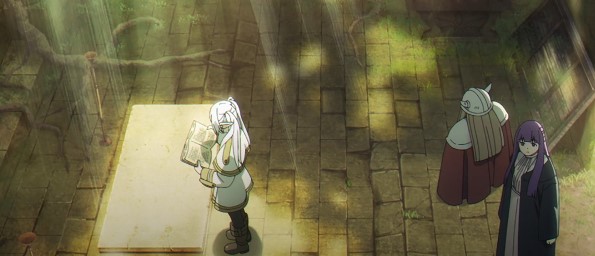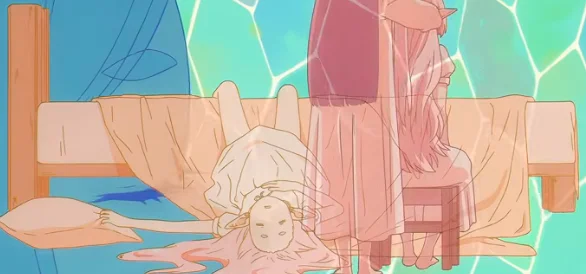Frieren: Beyond Journey's End — A Masterpiece or Overhyped?

(Slight spoilers for the first four episodes)
When Frieren: Beyond Journey’s End premiered, it quickly soared to the top of anime charts where it has now remained as number 1 for over a year, drawing immense praise and high expectations. With its unique premise exploring life after a heroic journey has concluded — specifically, what happens when the Demon Lord is defeated — the show promised a rare post-heroic narrative. I was eager to see if it could live up to the hype. Yet, after watching the first episode, I was left with mixed feelings. Here’s a look at why I found the show’s initial hype somewhat underwhelming, yet justified as the story unfolded.
Underdeveloped Heroes and the Hollow Farewell
The opening scenes in Frieren introduce us to the adventuring party who defeated the Demon Lord years ago: Himmel, the brave hero; Heiter, the drinking-loving priest; Eisen, the stoic dwarf warrior; and Frieren, the detached elf mage. Himmel, the group's charismatic leader, is introduced as a traditional hero archetype, primarily characterized by his strong bond with his comrades. Heiter and Eisen receive similarly surface-level introductions, with Heiter defined mostly by his fondness for alcohol and Eisen by his stoic dwarven presence. Though this could be a strategic narrative choice to reflect Frieren’s elvish perspective of those around her, these character sketches felt almost too shallow, especially as we witness Himmel’s passing with minimal emotional depth.
As Himmel’s life fades, Frieren cries in despair, "Why didn't I try to get to know him better?" Despite her regret, she continues wandering, returning only every few decades to briefly reunite with her remaining party members. This lack of urgency dampens the emotional weight of Himmel's death, which feels more symbolic than personal. The focus on the transient nature of human life is clear, but the episode overemphasizes it, with repetitive narration like, "To her, fifty or even a hundred years might be trifling." The point is made so frequently that it risks detracting from the emotional resonance.

Regardless of this, the episode’s highlight is the beautifully animated montage of Frieren’s travels across the continent, offering a glimpse into the breathtaking world she roams. The natural landscapes and vibrant towns spark intrigue about what might lie ahead, even if the initial character depth falls short. And while the first episode left me hesitant to continue, the series took a compelling turn with the introduction of a new character: Fern.
Enter Fern: The Real Journey Begins
It’s in the second episode, with the arrival of Fern, that Frieren begins to fulfill its potential. Fern, a war orphan taken in by Heiter, is pushed to become Frieren's apprentice. At first, Frieren hesitates to train her, concerned about the possibility of endangering the life of a child raised by a friend. But, at Heiter’s urging (and deceit), she is stuck with taking Fern under her wing. Heiter’s final wishes reveal a hope that Frieren will grow through mentoring Fern, while providing Fern with an amazing teacher, giving both an anchor in each other as they navigate the world together.
Here, the show shifts focus, evolving from a fantasy narrative about an aimlessly drifting mage to a more intimate exploration of growth and companionship. Frieren’s reluctance to form attachments becomes a central theme as she grapples with the ephemeral nature of human relationships. Despite her centuries of life, Frieren has largely avoided close connections, apathetic towards those that she knows will quickly pass. Her dynamic with Fern brings about subtle but significant shifts in her character, allowing us to glimpse her softer side.
In a pivotal moment, Frieren becomes absorbed in searching for flowers, losing track of time and leaving Fern visibly frustrated. For Fern, who has experienced profound loss, Frieren’s indifference to time feels like a disregard for her own limited life. Fern believes that a powerful mage like Frieren, who has the potential to change the world, should be out there making a difference rather than dedicating months to trivial tasks such as looking for a specific type of flower than grew in a certain area decades ago. This moment serves as a turning point, as Fern’s perspective challenges Frieren to recognize the urgency of their time together.

Rediscovering Purpose and the Meaning of Friendship
Thirty years after Himmel’s death, Frieren visits her last surviving companion, Eisen, anxious that his time may also be drawing near, though in reality, it isn’t. When she asks Eisen if he needs assistance with anything, he expresses a desire to locate the writings left by the legendary mage, Flamme. Aware of Frieren's deep regret for not spending more time with Himmel, Eisen believes that these writings could offer her a chance for closure, potentially containing secrets for communicating with the dead.
Flamme, once Frieren’s mentor, had a profound understanding of her, recognizing that she would likely spend centuries grappling with the simple concepts that humans hold dear. Flamme warned her, "Someday, you'll make a terrible mistake and wish you'd gotten to know people better... When that happens, return to this place. Then I, Flamme the Legendary Mage, will help you." After nearly a thousand years, the moment has finally arrived for Frieren to seek out what Flamme had left behind.
Flamme’s writings speak of a place: "On the northernmost end of the continent lies the place the people of this world call heaven: Aureole, the land where souls rest. Many souls gather there, and I spoke with friends who once fought alongside me." This realm is located in Ende, where the Demon King's castle once stood and where Frieren's original adventure had concluded.
To reach Ende, Frieren must retrace the paths she traveled with her original party during their quest to defeat the Demon King. This journey offers her opportunities to reflect on the little things that made her previous adventure special, to notice how these places have changed over time, and to cultivate a deeper appreciation for her current journey. Eisen encourages Frieren to embark on this quest to Aureole, urging her to seek a final chance to speak with Himmel. This journey not only deepens Frieren's understanding of herself but also opens up the vast world to us, the viewers.

A World Worth Exploring
Beyond its characters, Frieren captivates with its meticulously crafted world. The art style, characterized by soft pastels and gentle textures, beautifully complements the introspective narrative. Each village, forest, and ruin that Frieren and Fern encounter feels alive and distinct, adorned with carefully crafted details that draw viewers in. Subtle elements, like the sound of trickling water or birds singing, breathe life into each scene, transforming the landscapes into characters in their own right.
As Frieren and Fern explore, the story feels refreshingly grounded. Early on, we witness Frieren's secret desire to save money so she can save up enough money for a hair ornament for Fern's birthday as well as treat her to any dessert she wishes. It’s intriguing to see a character who typically lacks an understanding of simple human traditions, like birthdays, go out of her way to make someone else feel special. Fern clearly recognizes Frieren's occasional obliviousness and expresses her gratitude, saying, "I'm overjoyed that you tried to get to know me." These small interactions endear the characters to us, showcasing their evolving relationship.
As the journey continues, the charming interplay between Frieren and Fern deepens. Their roles often swap; Fern’s pragmatism encourages Frieren to become more mindful, while Frieren’s wisdom teaches Fern the value of patience. This blurring of the lines between child and mentor enriches their dynamic, lending warmth to the story.

Final Thoughts: Worth the Hype?
Frieren: Beyond Journey’s End may not immediately live up to its lofty reputation, with a slow start that could underwhelm some viewers. However, its true strength lies in its quiet, reflective storytelling and breathtaking world-building. While the characters in the first episode may initially seem one-dimensional, the narrative blossoms as Frieren and Fern journey together, gradually revealing layers of depth and complexity.
For those seeking an action filled anime, it's important to note that this isn’t the show’s main focus, but it strikes a good balance between thrilling battles and the more slice-of-life moments. Nevertheless, when fights do occur, they are nothing short of top-tier, rivaling the most exhilarating battles found in any genre of anime. The balance between action, world-building, and character development makes this show easily appealing to a more casual audience while also captivating avid anime watchers, which in turn justifies the hype the show has been receiving.

